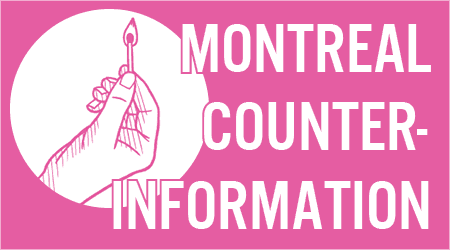The Plan Nord/Le Nord Pour Tous is a plan by the Quebec Government to invest in and promote resource extraction projects in Northern Quebec. Le Plan Nord was originally proposed by Jean Charest’s Liberal government in May 2011, and was presented as an economic development strategy to create job in quebec. When the Parti Quebecois replaced the Liberals in 2012, Le Plan Nord was simply slightly modified and re-named Le Nord Pour Tous. Under Le Nord Pour Tous, the quebec government plans to invest 1.368$ billion of public finds, from 2013-2018, into resource extraction projects and their associated infrastructure in Northern Quebec.
Le nord Pour Tous is not the purported ‘solution’ to an economic crisis, but is part of an ongoing strategy of colonization of nations within canada. Every river diverted and forest destroyed represents areas where hutning food, harvesting medicine, and passing this knowledge onto younger generation can no longer occur. In the words of Pishu Pilot, from the Uashat reserve (one of the territories within the scope of Le Nord Pour Tous), “The Plan Nord affects our territory, and when it affects our territory it affects tradition, culture, our language, our roots, and our history…Plan Nord is a plan that will destroy everything we are as First Nations people.”
There has already been plenty or resistance to Plan Nord/Le Nord Pour Tous. One of the more memorable afternoons during the quebec student strike and associated generalized uprisings was the April 22nd disruption of the ‘Salon de l’emploi du Plan Nord’ in Montreal, where two demos converged to disrupt the functioning of day-to-day society and to wreak havoc on this promotional event for Le Plan Nord. In march 2013 two instances of sabotage, where a SOQUEM office in Chibougamau was vandalized and a poster which hindered access to the highway leading to the Renard Project mine, were claimed in solidarity with resistance to the Plan Nord. There has also been a more consistent resistance from the communities of Uashat and Mani-Utenam, who’s territories would be directly affected by the creation of hydroelectric dams and associated infrastructures along the Romaine River. Resistance has taken the form of blockades of Highway 138 (the main highway in the region), hunger strikes, and Innu-lead demonstrations in Montreal.
The intention of this booklet is to begin to map out what exactly Le Nord Pour Tous is, what the extraction and development projects are, where they are located, who is responsible for them, and which communities are being affected the most immediately. This booklet is in no way complete; but we hope it was act as a good starting point for any further research.


